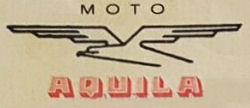

A Brief History of the Italian Marque
Manufactured by Bruno Cavani, 1949-1957
Address: Via Panzacchi 25, later Via Santo Stefano 12, Bologna
In 1923 Bruno Cavani's activity began as the sole representative for Italy of the German car and motorcycle factory DKW, based in Via Mazzini 174, in the area between the current Via Emilia Levante and Via Fossolo.
Due to the fascist government's constraints and harassment, and then the damage caused by the bombing of 12 October 1944, he was forced to close.
Immediately after the war Cavani approached DKW who were pleased to renew the agreements. He was then in a position to sell both his own motorcycles as well as those built in Germany.
The new company enlisted the services of the nearby OMA (Amadori) firm to construct the components he required for motorcycle manufacture - light alloy castings, rims, hubs, brakes and the like. Cavani, who in 1949 designed and patented a rear swingarm suspension system, fitted the DKW 125 RT engine to his own chassis.
In 1948 they launched an innovative Cavani DKW 125 which used a frame of their own design with monoshock rear suspension. This was marketed as the DKW TR125 W, available in Normale, Turismo and Sport versions. The engine was unchanged from the original, and was fed by a Dell'Orto MA16 carburettor. The machines were produced until 1954, and possibly later.
Along with the Cavani RT 125 W Turismo he added other models to the range - the RT125 W Gran Turismo, Sport, Lusso, Corsa, and in 1952 cross-country models.

Early in 1957 Cavani sold the business to his nephew Livio Biagini who had been working with him for some time. A small brochure was published advertising the Aquila 175 four-stroke and a 75cc four-stroke, with an Aquila logo.
Shortly thereafter the company was renamed Motauto, headquartered at the same address - Via Mazzini 174.
N.B. genusbononiae.it refers to both Motoauto and Motauto - the former is likely correct. There was a Motauto near Varese in the 1950s.
Sources: Museo del Patrimonio Industriale, Bologna; collezioni.genusbononiae.it
Further reading: DKW Cavani by Jörg Sprengelmeyer, published 2018.
If you have a query or information about these Italian motorcycles, please contact us